When it comes to bioactive cleanup crews, there’s nothing better than the tag-team duo that is the isopods and springtails.
They work together to keep the terrarium clean and they help to enrich/aerate the substrate for the benefit of your plants.
What’s not to love?
Find out what makes these natural microfauna partners such a great unit, and how to maximize their effectiveness together.
Go team bioactive!
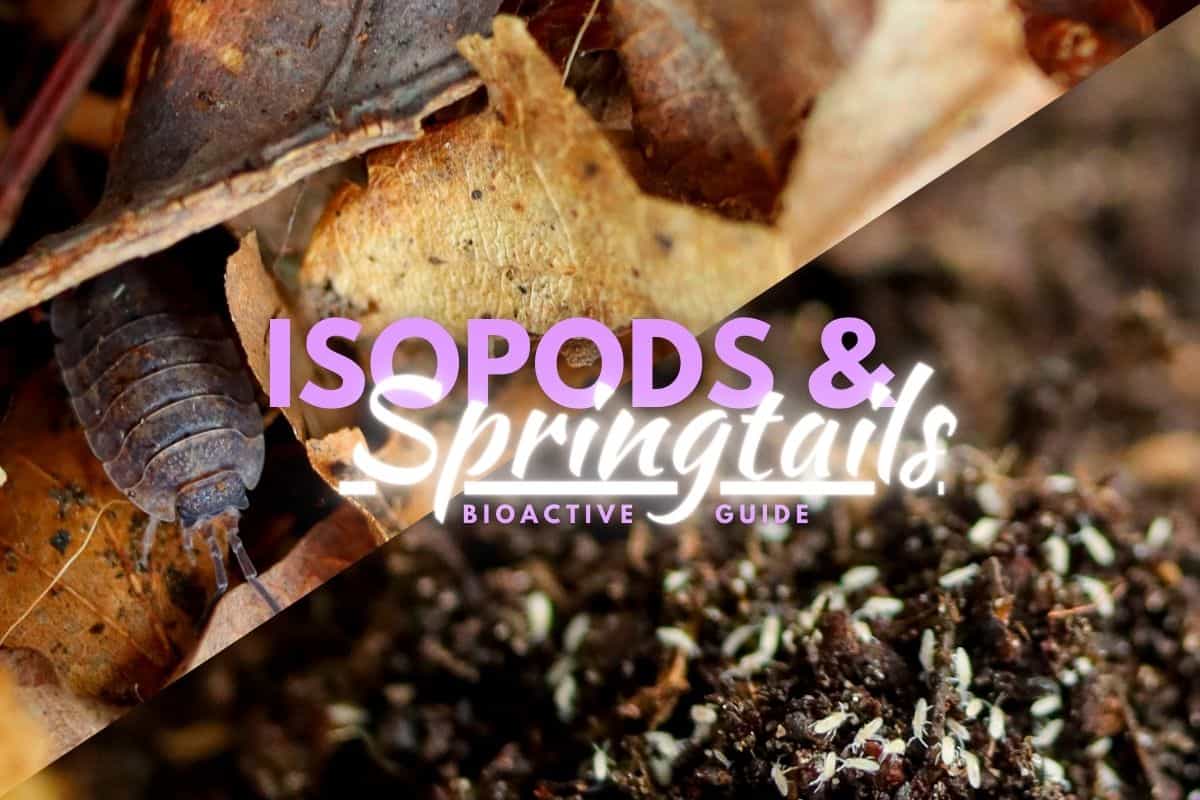
Terrarium Tribe is reader-supported. When you purchase through links on our site, we may earn an affiliate commission (at no further cost to you). 💜
The Bioactive Clean Up Crew – An Overview
A “bioactive” terrarium or vivarium is one that uses microfauna (i.e., tiny animals) and microflora (i.e., microbial organisms) to regulate the environment.
Just as nature has its ways to recycle decaying plants and organic matter, a bioactive setup hopes to achieve the same.
Albeit on a much smaller scale.
Today, we’re focusing on the microfauna aspect of this natural puzzle. How can combine the advantages and properties of different species to create the healthiest self-sustaining environment?
Thankfully, in the league of bioactive bugs fighting to be at the top – there’s a clear set of finalists.
The isopods and the springtails.
And, in this game, there’s no need to decide on a winner. We choose both!
Isopods and springtails make a good combo because they work both independently and synergistically. Sure, either is a good choice on their own – but together, they’re stronger.
Next, I’ll break down how.
Isopods for Terrariums
Isopods are the great recyclers of a bioactive setup.
Any decaying organic material (commonly known as “detritus”) is fair game for these hardcore munching machines.
They’ll make sure that any departed plant matter or mosses are taken care of before any rot sets in.
Just note that excess plant material alone is not enough to sustain them. You’ll have to further drive that process by supplying them with plentiful leaf litter and maybe softwood chunks.
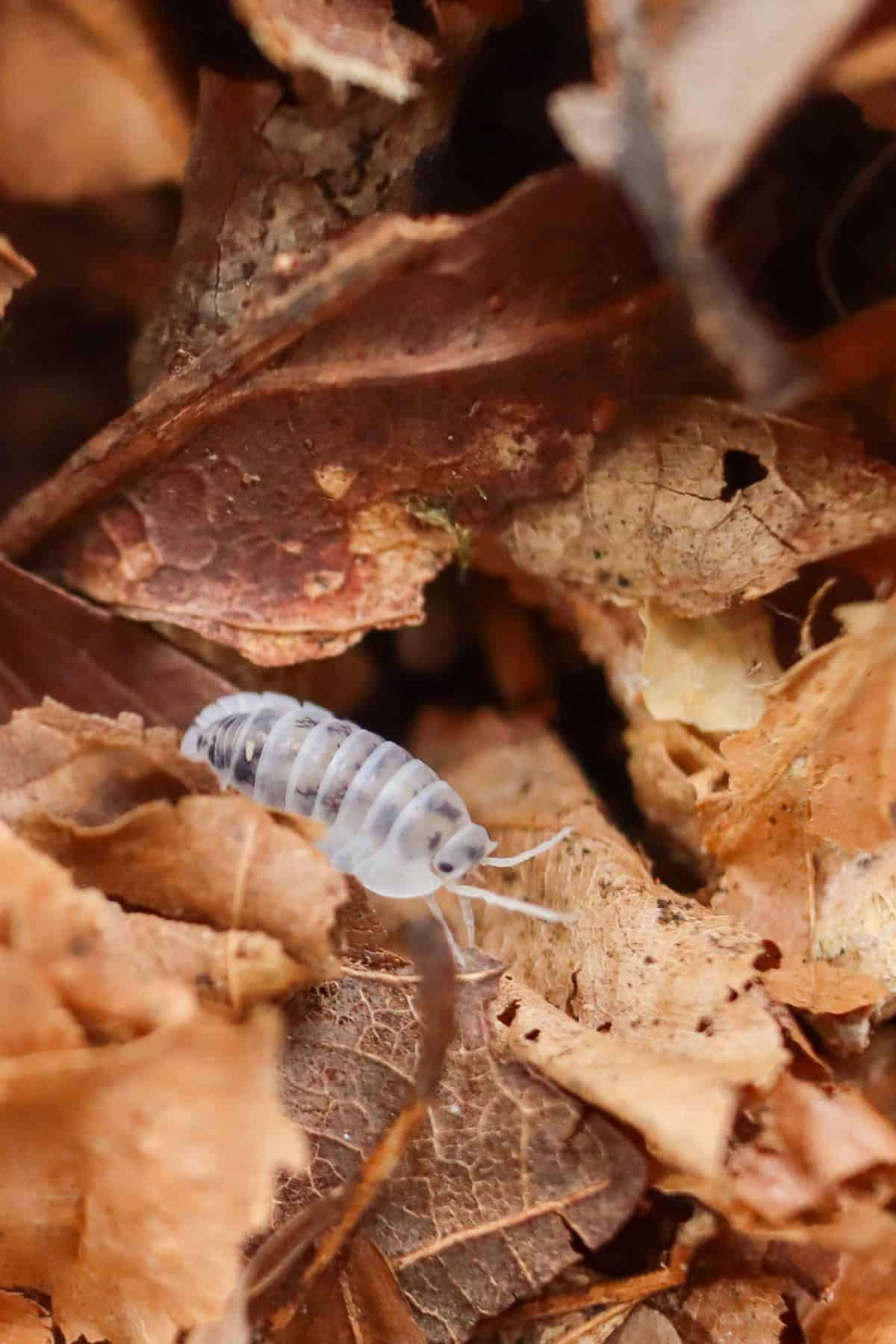
It’s all worth it, though, because all of the nutrients that they consume are released back into the substrate via their fertilizing poop (also known as “frass”).
The circle of life is wonderful, isn’t it?
The burrowing nature of isopods also helps to aerate any substrate that they end up tunneling through. So, as you might imagine, having a healthy colony of isopods in a terrarium can really keep that soil soft and tilled.
Finally, in a reptile vivarium, they can serve as a healthy snack!
Best Isopod Species
There’s a big list of isopod species on offer these days, and they’re not all created equal in cleanup potential.
We want an active and hungry team of feeders, ready to chow down on any unwanted material.
And, we need species that are going to thrive in the warm and humid conditions of a tropical terrarium or vivarium. That rules out some of the drier, more temperate, and arid species.
Here are some good choices for different setups.
- Trichorhina tomentosa – The Dwarf White Isopods are perhaps the most popular choice for planted terrariums and vivariums. Being so tiny, they tend to work unnoticed in the background, but they do a great job.

Dwarf White Isopods – 20+ Count
A hidden cleanup crew of tiny yet efficient bioactive cleaners
Available on the Terrarium Tribe Store.
Dwarf Purple Isopods are available, too! They’re even smaller and even more camouflaged.

- Porcellionides pruinosus – The Powder Orange Isopods (and Powder Blue) are a staple for a vivarium ecosystem and are one of the longest-running cleanup crew members. Great for medium sized tanks.

- Porcellio laevis – The Dairy Cow Isopod is one of the larger species, and they’re true bioactive powerhouses. Perfect for bigger containers with plenty of food to process.
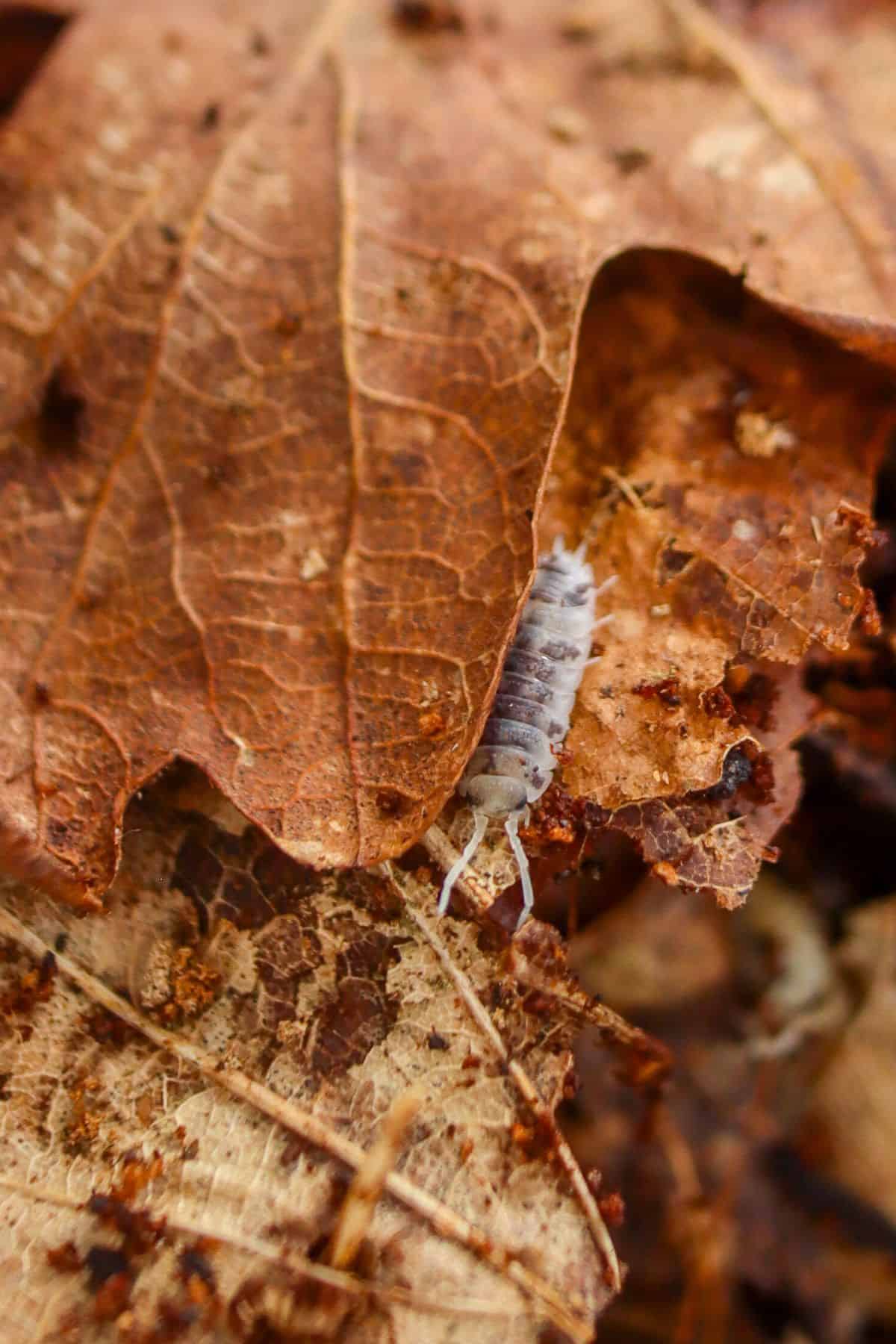
👉 Grab a culture of Dairy Cows.
- Porcellio scaber – This adaptable species can handle a range of bioactive terrarium environments. They also come in a diverse amount of color morphs, giving you lots of options to run with aesthetically (e.g., Lava and Dalmatian).
Okay, that’s by no means an exhaustive list. Just a selection of our favorites. Be sure to check out our full range of isopods for sale on our online store (the cleanup crew species all have a purple badge).
Springtails in Terrariums
The primary purpose of springtails in terrariums is mold control.
Realistically, mold is going to be an ongoing issue in a hot and humid terrarium, and springtails love to eat it.
They’ll eat all kinds of mold, fungus, and spores – helping to keep any outbreaks under control and often stopping them before they even get started (which is why I recommend them in all terrarium setups).
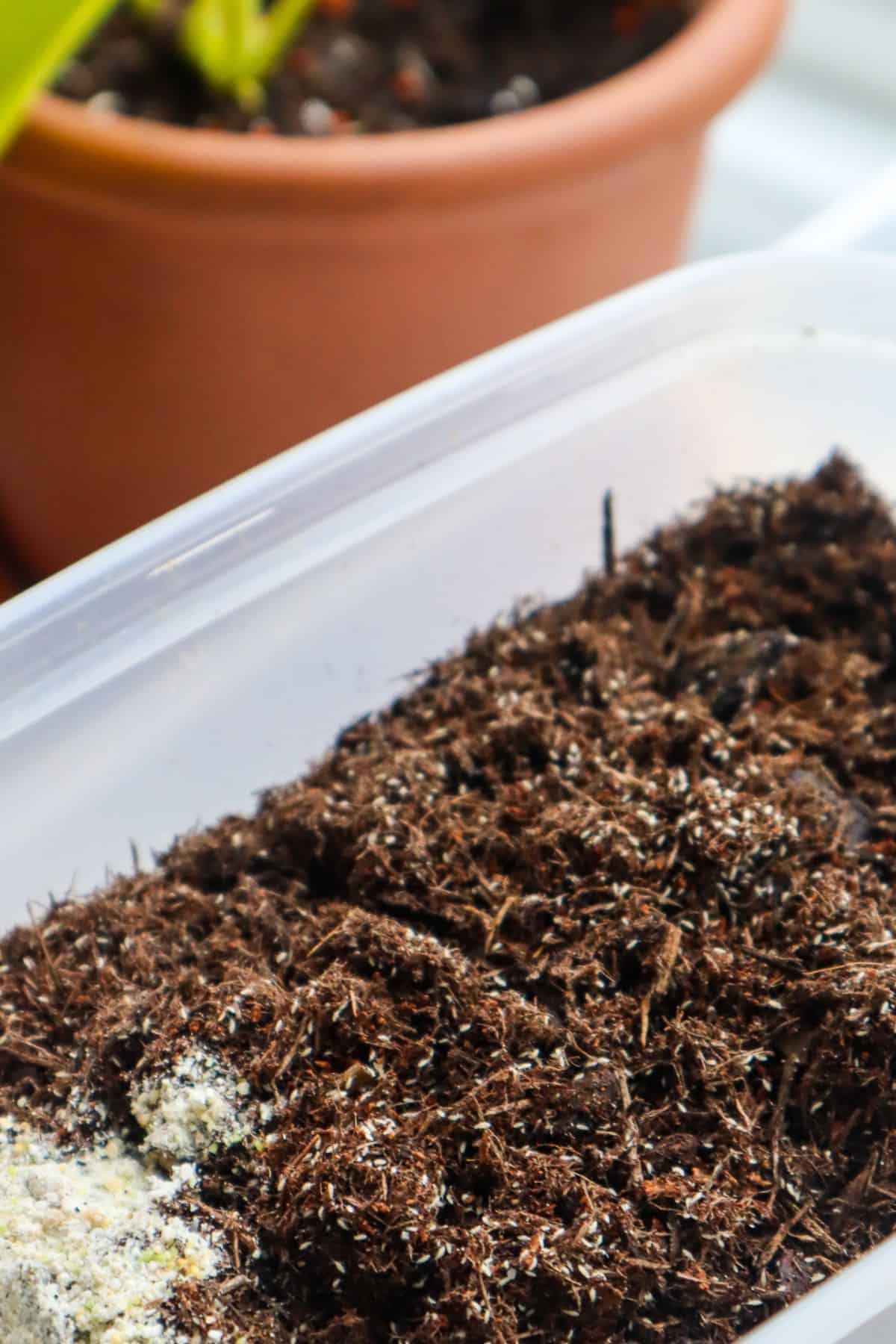
What makes springtails and isopods such a good pairing is that the best environment for isopods is prone to mold – so they essentially cover each other’s weaknesses.
Not just because isopods like it humid and moist, but they also need decaying organic matter and supplementary foods.
Adding fruit and vegetables to feed isopods is a great way to supplement their diet, but sweet, moisture-rich chunks are a potential mold eruption waiting to happen. Especially if you add too much for the isopods to consume in one sitting.
That’s where springtails come in.
In fact, we can put the appetites of the springtails to further use in a terrarium/vivarium.
- They out-compete any pesky mites and fungus gnats for food.
- They also reportedly eat isopod frass, helping to further spread the fertilizing goodness to the plants.
Best Springtail Species
Unlike isopods, springtails haven’t (yet) developed much of a hobby culture.
So, we don’t see anywhere near as much breeding attention or unique variations coming through the pipeline.
However, springtails retain a natural diversity of color and environmental specialization – hurray!
To be honest though, you’re most likely going to go with the two most common choices.
- Tropical White Springtails (Collembola sp) – A common choice for tropical terrariums (as you might imagine from the name), these do well in higher temperatures. Though they reportedly reproduce at a slower rate than their temperate counterparts.
- Temperate White Springtails (Folsomia candida) – These are perhaps the most common and well-regarded species of springtails in the terrarium industry. Despite being named for temperate environments, they adapt very easily.
👉 You can find a culture of Temperate White Springtails for sale on our store.

White Springtails Culture on Calcium-Bearing Clay
Springtail colony starter to establish a thriving bioactive terrarium ecosystem.
Available on the Terrarium Tribe Store.
In reality, there doesn’t appear to be a big practical difference between tropical vs temperate springtails. Pick whatever seems the most suitable and give it a try.
Alternatively, you can also try springtails in Pink, Silver, and Black, but they’re not tried and tested like the white ones.
Results may vary on the more exotic front!
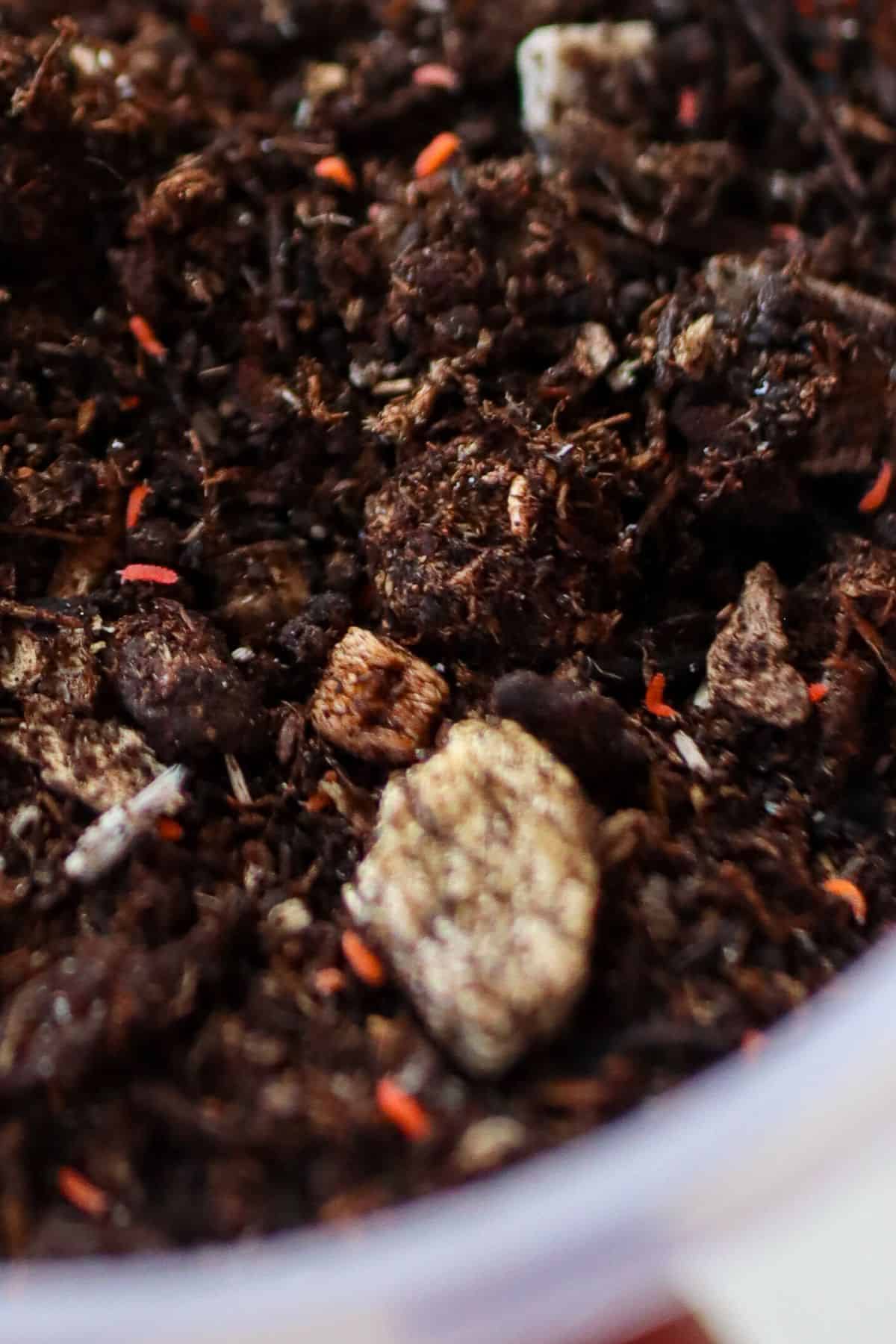
Starter Cultures – How to Get Started With Isopods and Springtails
Most often, an isopod culture will come in a small container with some sort of isopod substrate or simple substrate material, e.g., raw sphagnum peat moss.
This can often be added directly to your container and mixed into an area of the existing substrate.
Whereas it’s more common for your springtail culture to come with charcoal instead, you can still add this in if you wish (charcoal does bring benefits to a tropical substrate), or you can easily “rinse your springtails in.”
I.e., If you flood your charcoal container with water, the springtails will usually float, and you can tip them straight in whilst holding back the charcoal chunks.
Provided you already have sufficient bioactive materials in place (like oak leaf litter), then that’s about all there is to it.
We always recommend adding some cork bark, too. Isopods love it as a natural hiding place (which doubles as an occasional snack), and it holds up super well in humid conditions.

Cork Bark Pieces
A fan-favorite shelter and food for bioactive critters.
Available on the Terrarium Tribe Store.
It’s probably worth providing a little bit of supplementary springtail and isopod food right away just to get them off on a good foot, but they’ll take a little while to get settled in their new space.
👉 Check out our nutrient-packed Isopod Superfood Blend.
Check out my full guides on how to culture springtails and what springtails eat for more help on the springtail front!
Over to You
How have you used isopods and springtails in your terrarium/vivarium?
Do you have any favorite species combinations? Let me know in the comments below!
Next, if you need some more guidance (perhaps for an isopod pet instead?), check out our full buying guide for the many types of isopods for sale.
Or, if you need to go back to basics, What is an Isopod? Is your best bet.

Very interesting article. A few years ago, I added some tropical plants in my Exo-Terra. Then, I addd some dead leaves from a forest near where I live. After a few days, I noticed babies isopods. They grew fast and reproduced very well. I feed them with salad and vegetables. After a few months, I must had near one hundred of those isopods.
Now, my terrarium is empty. I want to create an habitat for epiphytic plants. I plan also to introduce tropical isopods and try springtails.
Continue your good work. I really like your articles.
Thanks for the kind words Stephan! 🙏
I guess with my terrarium it’s not always closed down. Have a partial lid w/ a plant grow light meant for an aquarium…Yescom75.
My question is, will they crawl out (up the glass and out)
Thanks! Thomas
Springtails can jump and isopods can climb – so there’s nothing stopping them from making their way out of the opening if it’s large!
Very helpful Dude!
Hello and thanks for all your info and enthusiasm. How do you work out how many spring tails and isopods you would add for the size of a given terrarium?
Thanks, Rob
Hey Rob, to be honest, I find it quite challenging to calculate how many you’d need to fill a terrarium (there are so many factors to consider). It’s so much easier to just buy a starter culture of each and allow them to reach their own natural population density in the space.
New to all of this, what keeps these useful guys from getting out of the substrate and spreading around your living space? Are they going to stay where I put them in the ecosystem they are intended?
A lid hopefully 😂
Silly question, but what do I do when the springtails and isopods pass away? Not abnormally, but just a normal life cycle. Do I pick them out or do their deceased selves add to the mini ecosystem?
It’s a very good question – not silly at all! Turns out, they’re quite the nutritious snack for their living friends as gross as it sounds 😂
Hi! Thanks for the awesome article. I was recently inspired to make my own terrarium, and have a few questions, but I won’t bother you with all of them. I’m just wondering; Can I have Millipedes or small snails in my Humid Swamp Terrarium ? The thing is, I definitely plan on having isopods and springtails, but I’m just curious if millipedes and/or snails could help clean the ecosystem, or be overkill, since this combo works so well. Also, will springtails or isopods be eaten by American Toads?
Thanks so much, Gabe
Hi Gabe, I’m afraid American Toads don’t fall into our remit! But you might like to check out our article on millipedes in terrariums, and our article on snails in terrariums.
Hi! Thank you for the awesome article. I just received my isopods and springtails! But now I don’t know what to do with them to keep them from dying. Do I have to use them right away or can I use them when I am ready to build my terrarium? Thank you!!
Hi Olivia, they’ll likely be fine in the container/substrate they arrived in for a short while but I’d aim to put them in a suitable culture box or terrarium as soon as you reasonably can.
I’ve added springtails & isopods to my terrarium. I can usually find a couple of the isopods crawling around, but I can’t see any of the springtails. Do I just give it time & how much time? The mold is getting pretty intense, so if I need to add more, I’d rather do it before it’s too late to save my terrarium.
Hi Sarah. A springtail population will grow if there’s more food (mold) available, so you shouldn’t need to add more. A mold bloom is relatively normal and often goes away on its own in time.
Hi guys! I received my springtails, they arrived alive and well! They came in a brown “mud” like substrate. I wasn’t sure how to transport them into the terrarium so I just scooped it out and put it directly into the terrarium, but now I’m wondering if that’s going to harm them?
Hi Kate! The mud-like susbstance is calcium-bearing clay. You don’t need to add that to the terrarium, it’s just a medium to culture them on. You can simply tap (or wash) your springtails out of the cup and into your terrarium. Though it won’t do them any harm in the terrarium, I’d probably remove the clay if you can.